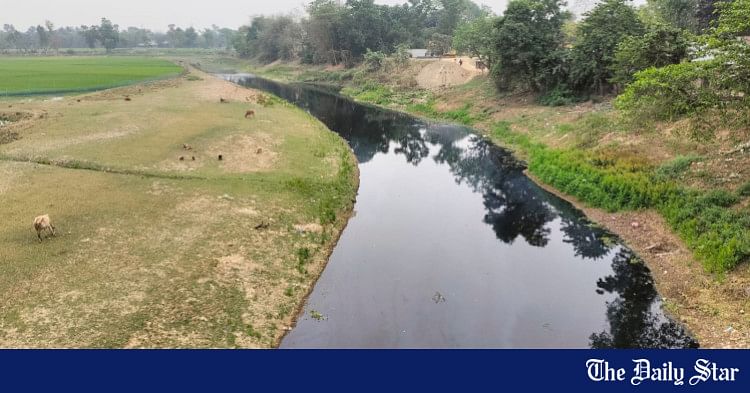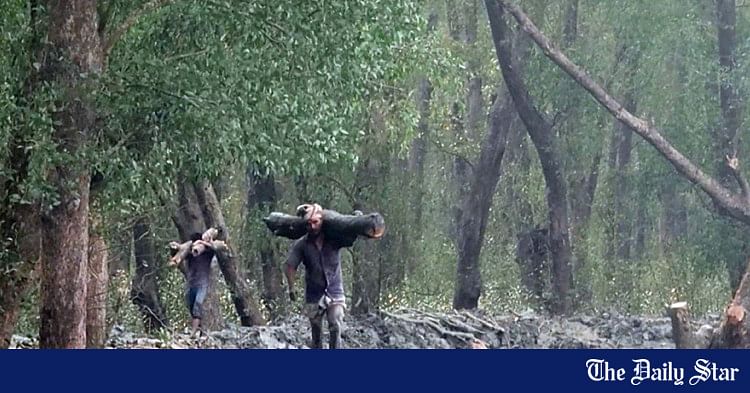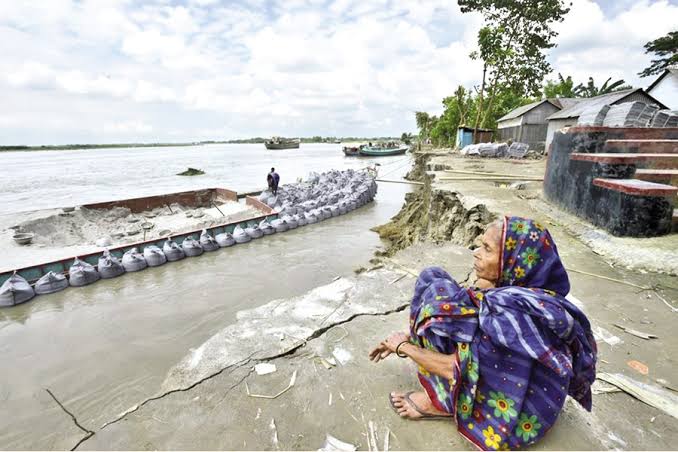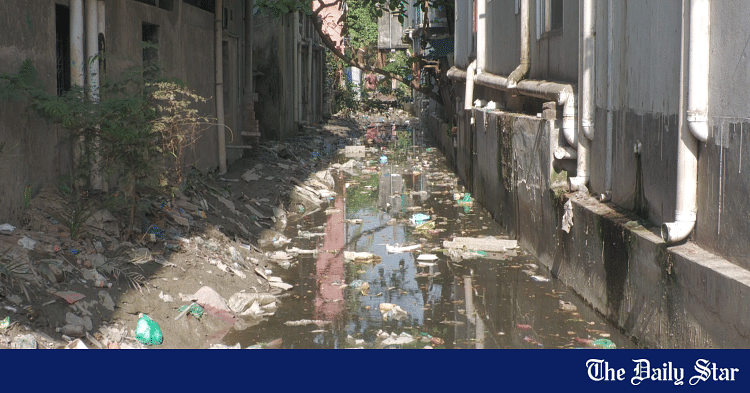- Copy to clipboard
- Thread starter
- #361

From flowing lifelines to dry beds
Authorities must prioritise river protection
From flowing lifelines to dry beds
Authorities must prioritise river protection

Visual: Star
It is alarming that at least 79 of the 1,156 government-listed rivers in Bangladesh have either dried up or are in the process of doing so. According to a recent study by the Rivers and Delta Research Centre (RDRC), all these rivers are heavily silted and either fully or partially dry up during the lean season, primarily due to upstream water diversion. As a result, livelihoods, agriculture, and local biodiversity are under threat.
It is no secret that under the previous government, encroachment—particularly by influential quarters—became rampant, with little legal action taken against those responsible. The RDRC study has found that large portions of several rivers have vanished in recent years due to unchecked encroachment. So, we urge the authorities to take steps to protect these rivers by enforcing strict measures against encroachers, reducing pollution, preventing erosion, and restoring their ecosystems. A broader plan is also needed to facilitate and promote water transportation, which experts say is crucial for river conservation.
River transportation offers several other complimentary advantages as well. For instance, the study highlights that waterways are the most economical means of transport, with rivers and canals covering 24,000 km across the country. Road transport costs range from Tk 2.81 to Tk 3.51 per tonne per kilometre, while rail transport costs Tk 1.96 per tonne per kilometre. In contrast, water transport costs only Tk 1.12 per tonne per kilometre. Given this cost advantage, the Bangladesh Inland Water Transport Authority (BIWTA) should introduce more riverine routes and encourage their use to reduce pressure on roads and railways.
However, even these measures may not be enough. Dams and upstream water diversions have altered the natural flow of our rivers, making it increasingly difficult for millions of Bangladeshis to fish, farm, and transport goods. As water availability in these rivers becomes increasingly unpredictable, entire communities that depend on them are struggling to survive. Beyond human impact, wildlife in these regions is also suffering due to habitat destruction, further disrupting the natural balance.
Therefore, the government must adopt a more proactive approach in engaging with upper riparian countries—particularly India—to protect our interests through effective diplomacy. For years, Bangladesh has failed to secure its rightful share of transboundary water, and this urgently needs to change. Strengthening water diplomacy is essential not only for the sustainable management of the country's rivers but also for ensuring their very survival.
Authorities must prioritise river protection
Visual: Star
It is alarming that at least 79 of the 1,156 government-listed rivers in Bangladesh have either dried up or are in the process of doing so. According to a recent study by the Rivers and Delta Research Centre (RDRC), all these rivers are heavily silted and either fully or partially dry up during the lean season, primarily due to upstream water diversion. As a result, livelihoods, agriculture, and local biodiversity are under threat.
It is no secret that under the previous government, encroachment—particularly by influential quarters—became rampant, with little legal action taken against those responsible. The RDRC study has found that large portions of several rivers have vanished in recent years due to unchecked encroachment. So, we urge the authorities to take steps to protect these rivers by enforcing strict measures against encroachers, reducing pollution, preventing erosion, and restoring their ecosystems. A broader plan is also needed to facilitate and promote water transportation, which experts say is crucial for river conservation.
River transportation offers several other complimentary advantages as well. For instance, the study highlights that waterways are the most economical means of transport, with rivers and canals covering 24,000 km across the country. Road transport costs range from Tk 2.81 to Tk 3.51 per tonne per kilometre, while rail transport costs Tk 1.96 per tonne per kilometre. In contrast, water transport costs only Tk 1.12 per tonne per kilometre. Given this cost advantage, the Bangladesh Inland Water Transport Authority (BIWTA) should introduce more riverine routes and encourage their use to reduce pressure on roads and railways.
However, even these measures may not be enough. Dams and upstream water diversions have altered the natural flow of our rivers, making it increasingly difficult for millions of Bangladeshis to fish, farm, and transport goods. As water availability in these rivers becomes increasingly unpredictable, entire communities that depend on them are struggling to survive. Beyond human impact, wildlife in these regions is also suffering due to habitat destruction, further disrupting the natural balance.
Therefore, the government must adopt a more proactive approach in engaging with upper riparian countries—particularly India—to protect our interests through effective diplomacy. For years, Bangladesh has failed to secure its rightful share of transboundary water, and this urgently needs to change. Strengthening water diplomacy is essential not only for the sustainable management of the country's rivers but also for ensuring their very survival.
















